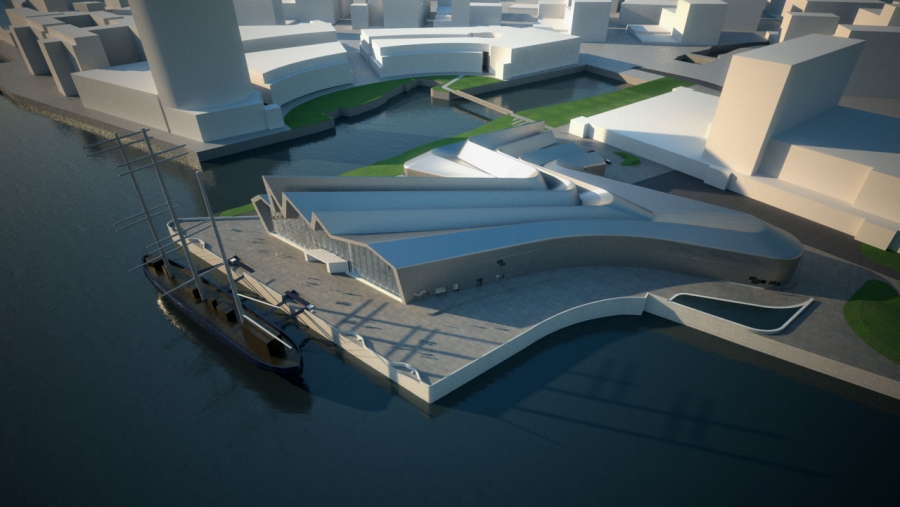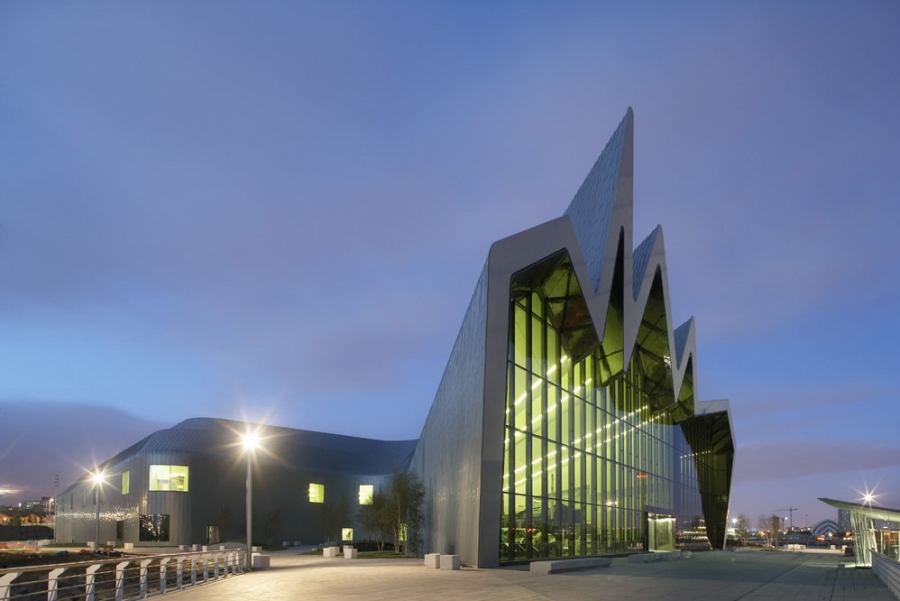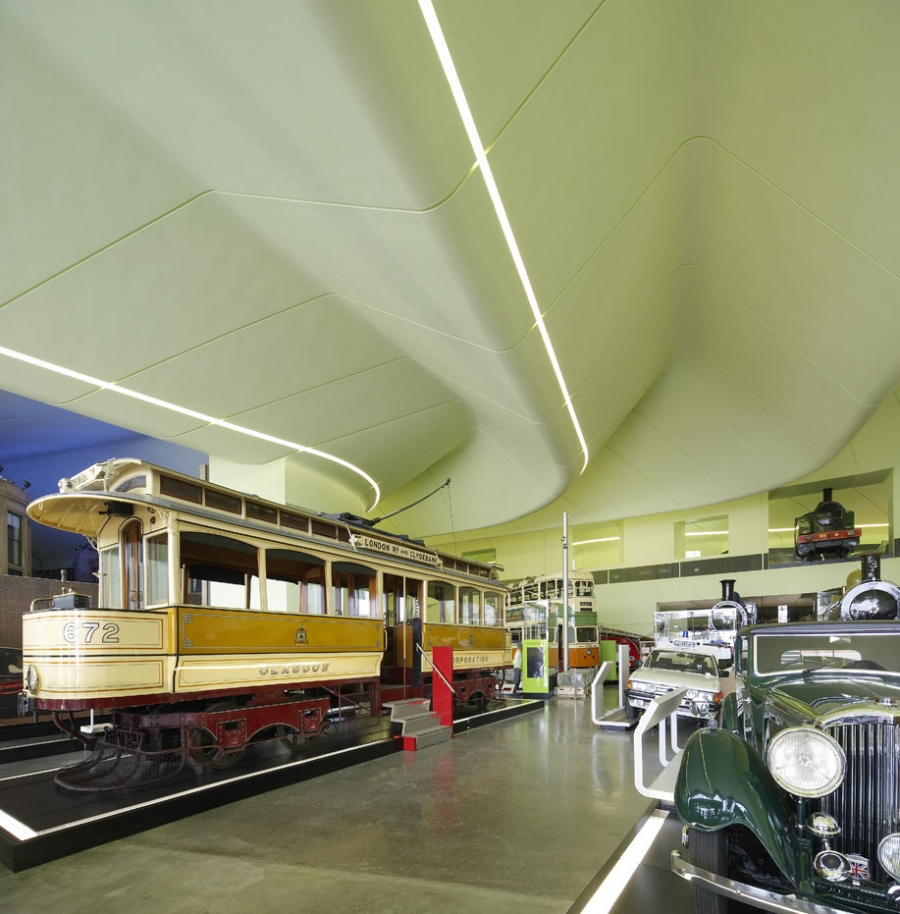Case Study: Zaha Hadid Architects’ Riverside Museum of Transport and Travel, Part 4
In this article, fourth in a five-part series on Glasgow’s Riverside Museum, Event Communications showcases Glasgow’s transportation heritage in their design for the Riverside Museum’s historic collection.
Located along the banks of the River Clyde, Glasgow, Scotland is known for its rich heritage of international trade, transportation, engineering, and shipbuilding. In June of 2011, the city celebrated its vibrant history with the opening of the Riverside Museum of Transport and Travel, which features more than 3,000 objects, films, photographs, and personal testimonials dating as far back as the early 1700s.
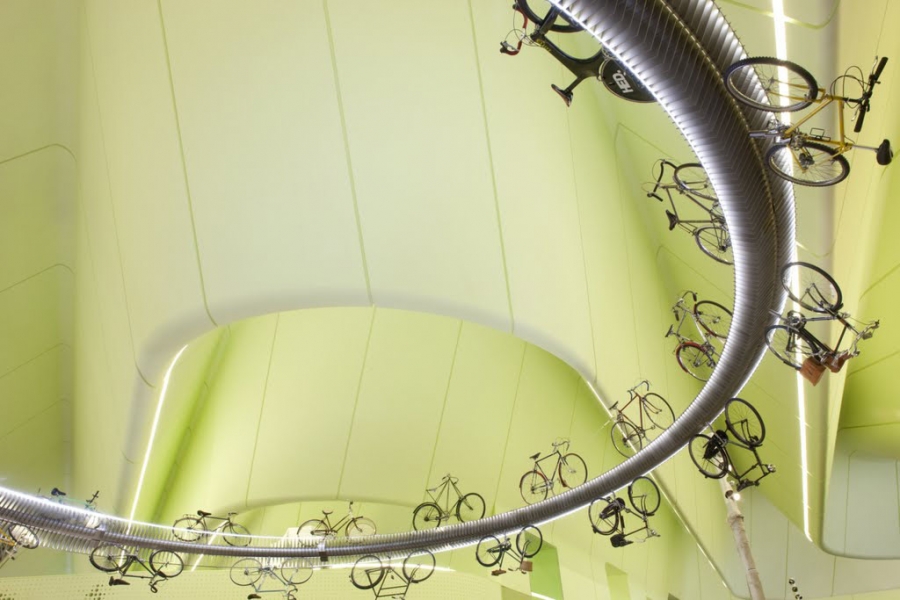 Image: McAteer Photograph/Alan McAteer
Image: McAteer Photograph/Alan McAteer
Event Communications, an award-winning exhibition group with offices in London and Dublin, was commissioned to design the exhibit and interior spaces within the Riverside Museum. Appointed at the same time as Zaha Hadid Architects, the two firms worked closely together to design the Museum from the inside out, using the objects and stories that would be housed within as the unified inspiration for the design.
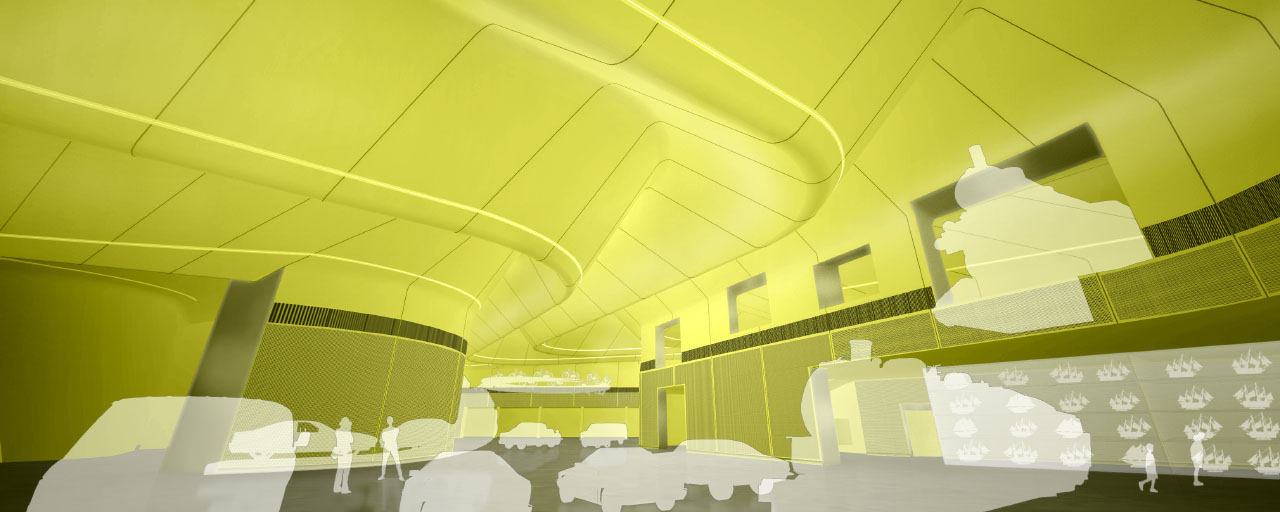
“The Riverside Museum was Zaha Hadid’s first major public building in the U.K. to be completed and, as such, carries a high level of prestige with which Event Communications was pleased to be associated,” says Esther Dugdale of Event Communications. “Additionally, Glasgow is a culturally vibrant and fascinating city; therefore the opportunity to be involved in a project there was particularly exciting.”
According to Dugdale, Event Communications was not only responsible for preserving the city’s internationally significant transport collections but also for determining how to connect with visitors and best tell the story of Glasgow’s history through experience-based displays. “In the former Museum of Transport, the collections had largely been arranged by type of object, such as cars, motorbikes, bicycles, and ship models,” she says. “Although useful for comparing one type of object with another, it limited options for interpretation. The new Riverside Museum uses a mix of displaying objects by type and also as part of a theme.”
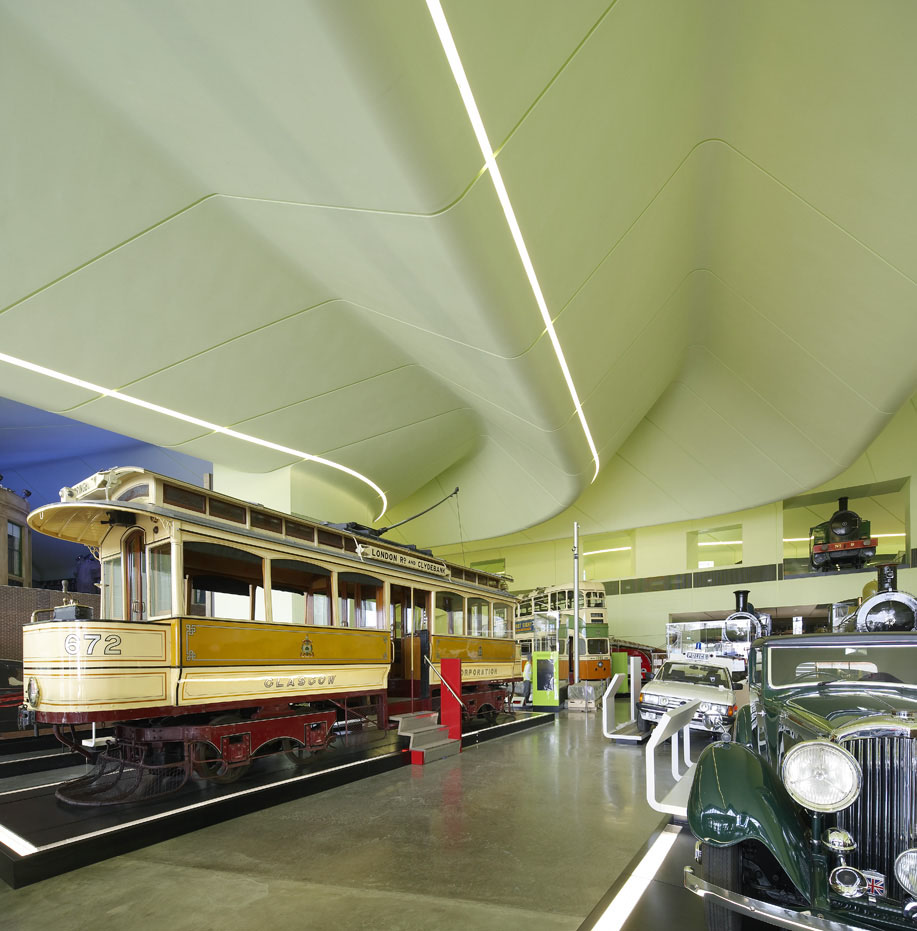
When designing the exhibit space, Event Communications took a “story display” approach, placing particular emphasis on the people who once used, witnessed, operated, or manufactured the objects on display. Each object is presented in the context of a specific story, along with many related objects and associated media. The mixture of objects and media (including text and graphic panels, audiovisual and touch screen displays, and high-tech interactive displays) helps to bring the stories to life and creates a personal experience for the user.
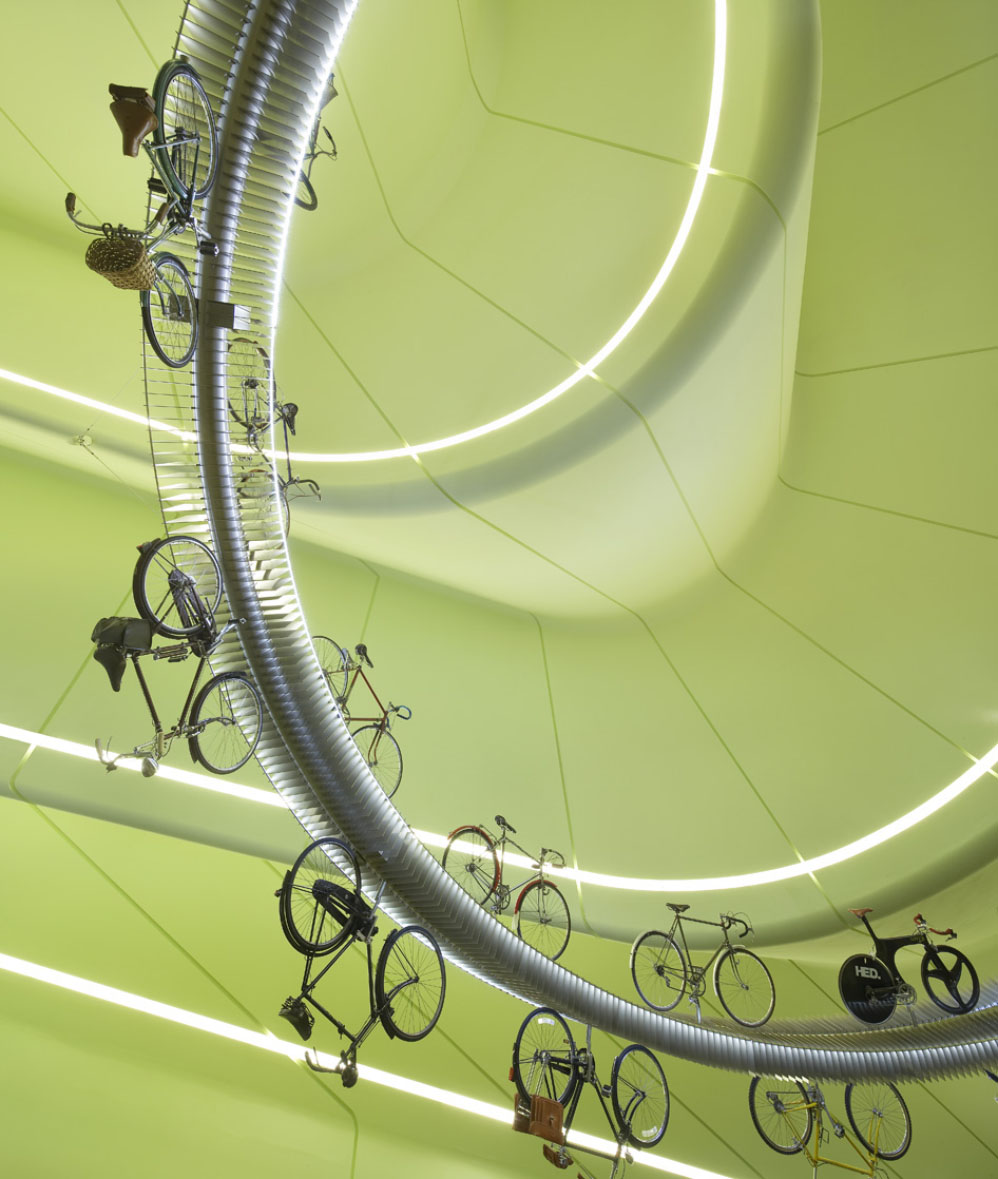
The Museum features nine main themes, with more than 150 separate in-depth story displays. The themes include:
-
Streets
-
The River Clyde
-
Transport and Leisure
-
Made In Scotland
-
Looks and Fashion
-
Crossing the World
-
Cutting Edge: Past, Present, and Future
-
Disasters and Crashes, and
-
Getting There.
The largest object in the Museum is 179-ton (182,583 kilogram) South African Railways Locomotive 3007, and the smallest is a Vanguard Toy Car weighing less than 85 grams.
While some of the Event Communications-designed displays are high-impact, structural, and permanent in nature (such as the Hanging Bicycle Velodrome and Wall of Cars), others were designed with flexibility so that new objects can continually be introduced with ease. “The overall effect is a powerfully intuitive environment in which a very broad range of objects and media feel equally at home,” says Dugdale.

According to Dugdale, the most challenging item to display was Engine No. 9 (of the Glasgow & South Western Railway), which is the only locomotive displayed on the mezzanine level. “Because of its size and weight (more than 10 tons), the No. 9 required a heavy lifting specialist and reinforced floor in order to accommodate it,” she says. “The short wheelbase and large overhang at the front of the engine allow the dramatic positioning of the locomotive over the edge of the mezzanine.”
The Museum also features two “world’s firsts” in the category of large-scale, museum-grade displays: the Ship Launch Show and the Hanging Bicycle Velodrome.
The Ship Launch Show displays 38 models that move within the case via a row of trays at the bottom and hangers at the top. “The hanging system is designed to drop down in the center, lowering the models to the visitors’ eye level,” says Dugdale. “The conveyor speed is calculated to the scale of the majority of the ship models, so when the models pass a scanner, the interpretation on the screens in the case is triggered.”

The Riverside Museum also features the Hanging Bicycle Velodrome, a display of 31 bicycles on a Möbius strip. “Even though it appears that the bikes are all on two surfaces (top and bottom), it is in fact one surface,” says Dugdale. “As the visitor follows a bike around with his/her eyes, one after the other, they will arrive back at the beginning. The Velodrome is made of 360 pairs of steel fins, each fixed into a large ring beam – one for each degree of the circle -- and each fin rotates by one degree.”
Although transport is the main focus of the museum, according to Dugdale, peripheral items such as costumes, paintings, and other related objects enrich the stories and help bring a new dimension to the museum. “This museum is for the people, and it is only right that it features this added richness and dimension,” she says.

Lisa Taylor Minor
Lisa Taylor is a freelance writer and marketing consultant. She has more than 16 years of experience as a communications professional and has worked with a variety of companies in the home products and building materials industry. Originally from Memphis, TN, Lisa earned a BA in Journalism from the University of Memphis in 1995 and a MA in Journalism from the University of Memphis in 1997. She spent the first 11 years of her career working in account service for Memphis advertising agencies Thompson & Company, Oden Marketing & Design, and Carpenter/Sullivan. Lisa then spent five years in Nashville, TN, with The Buntin Group, an Adweek Top 100 U.S. advertising agency, and Louisiana-Pacific Corporation, a leading manufacturer of building materials. Lisa currently lives in Denver, CO, and is Principal/Owner of Wazee Marketing.
Website: www.wazeemarketing.com




































